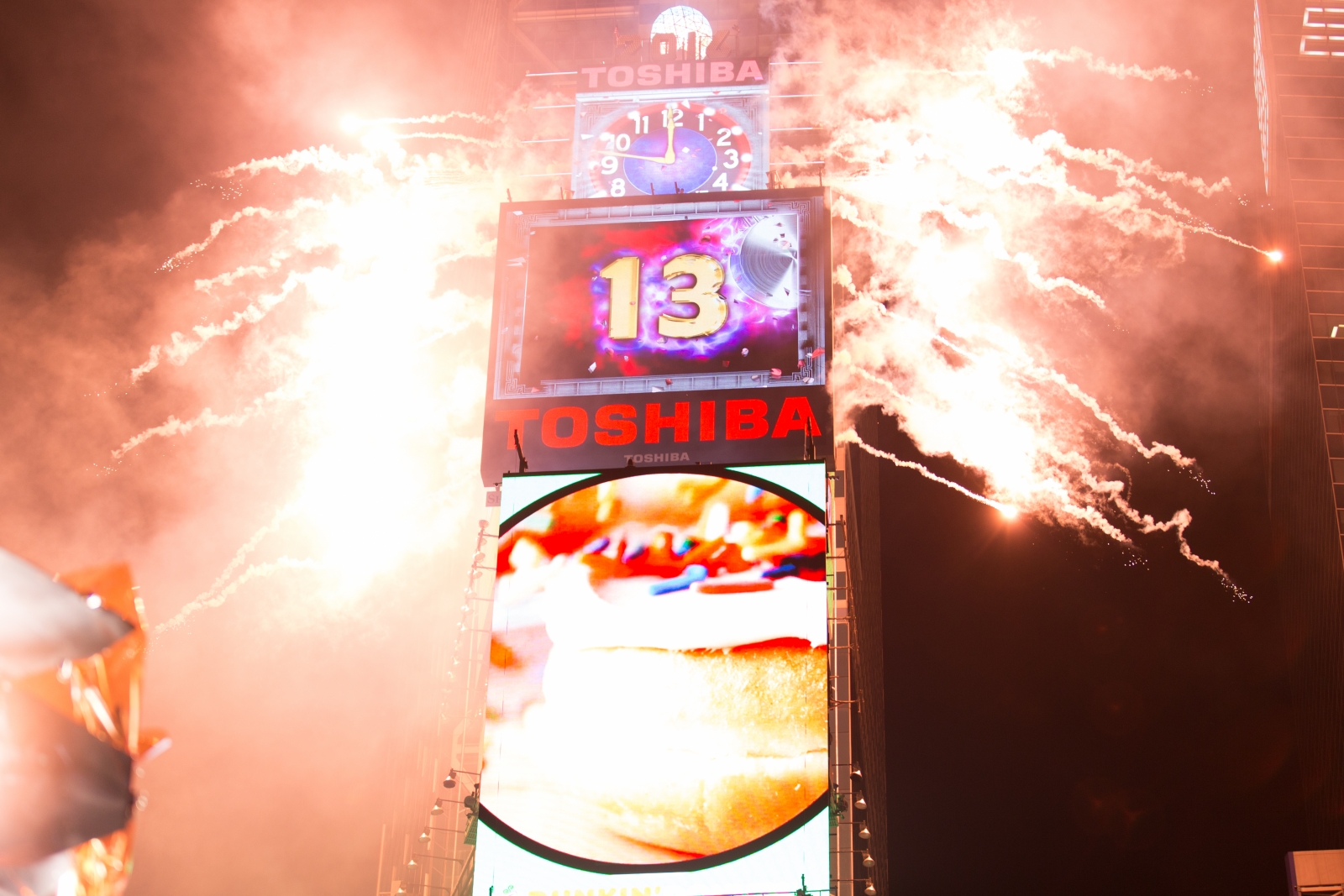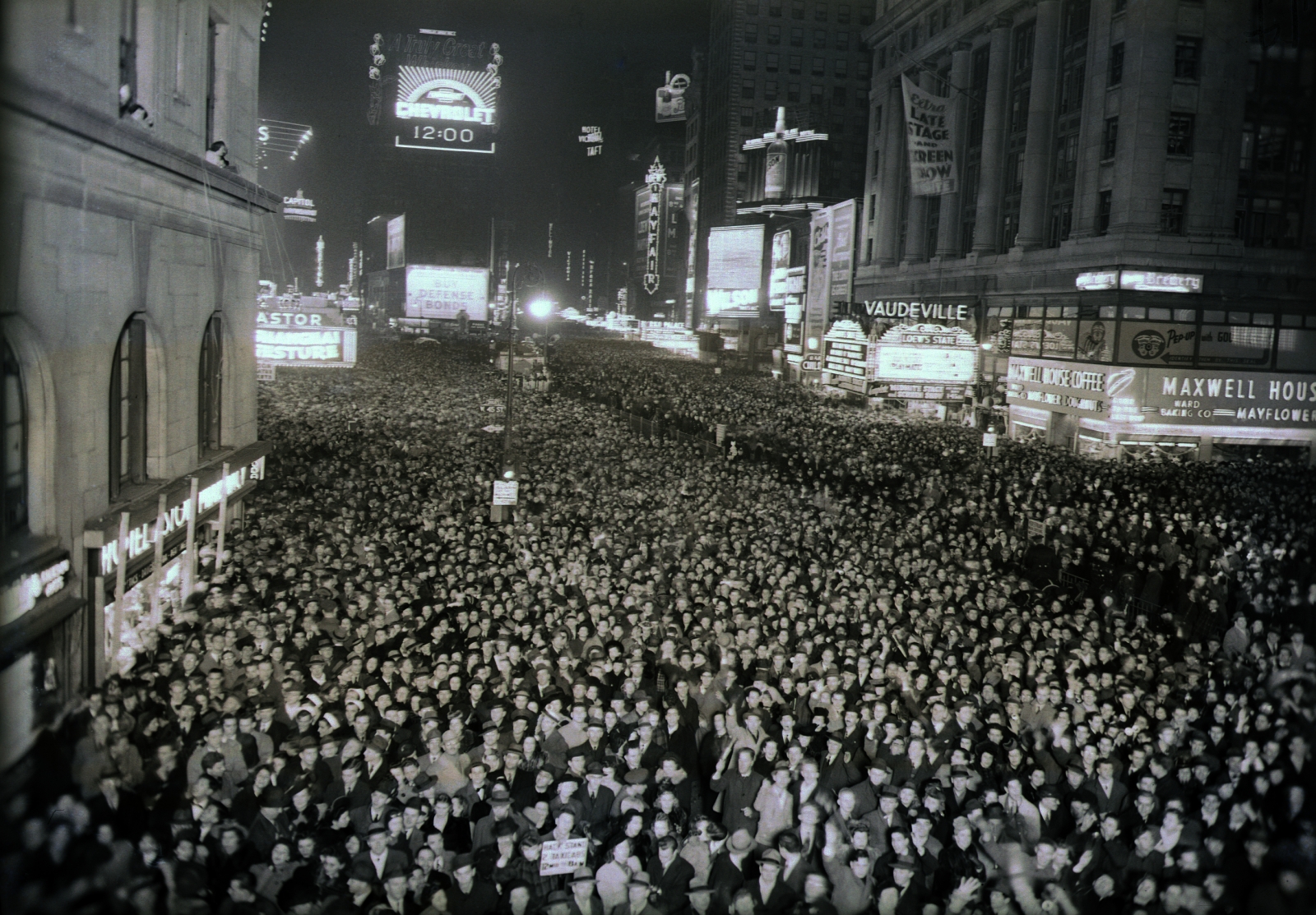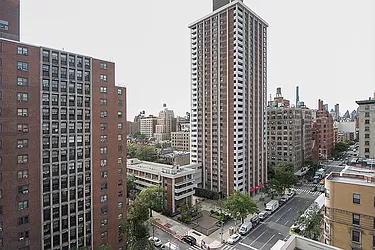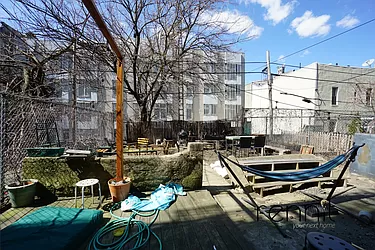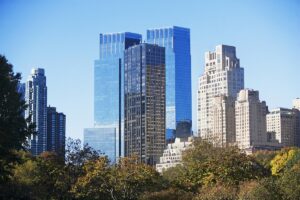Times Square never lives up to its “Crossroads of the World” moniker more than on New Year’s Eve, when, for the past 114 years, throngs have assembled to watch the Times Square New Year’s Eve ball drop. The famous crystal orb slowly falls down a pole during the last minute of the old year, reaching the bottom and lighting up the moment the new year arrives. Here’s everything you need to know about the Times Square New Year’s Eve ball drop, from how it began to how it see it in person.
How Did the Times Square New Year’s Eve Ball Drop Begin?
NYC Homes Under $1.5M Article continues below
Why Is the New Year’s Eve Ball Drop in Times Square?
Impresario Oscar Hammerstein got the ball rolling, so to speak, on Times Square’s ascension to the entertainment capital of New York in 1895, when he built the massive Olympia Theater at West 44th Street and Times Square, joining a couple of smaller theaters.
The Times Tower, now known as One Times Square, became the permanent home of the illuminated New Year’s Eve ball when metalworker Jacob Starr fashioned a 700-pound sphere made of iron and wood, 5 feet in diameter and featuring a hundred 25-watt incandescent bulbs. Starr’s studio, Artkraft Strass, was the manufacturer of all the various Times Square illuminated Times Tower spheres used on New Year’s Eve for most of the 20th century. By contrast, the current ball manufactured by Waterford Crystal is 12 feet in diameter, weighs 11,875 pounds, and is covered with 2,688 Waterford crystal triangles that are handmade in Ireland. In 1907 as now, the ball is gradually lowered down a flagpole heavy enough to accommodate it, reaching the bottom at midnight on January 1.
Which Building Does the Times Square New Year’s Eve Ball Drop Happen On?
Since 2009, the illuminated ball has hovered 470 feet above the street atop One Times Square — visible all year round — only moving from its perch and dropping slowly downward at 11:59 p.m. on December 31. The One Times Square building itself has greatly changed over the years, with the Times moving out in 1913 for larger offices on West 43rd Street, and then, in 2007, the “New Times Tower” on Eighth Avenue and West 41st Street. The old tower, stripped of its original Beaux-Arts architectural elements, has been the home of large illuminated ads in recent years, as well as the “news zipper” with the daily headlines, since the 1920s.
NYC Rentals Under $4,000 Article continues below
How to See the Times Square New Year’s Eve Ball Drop in Person
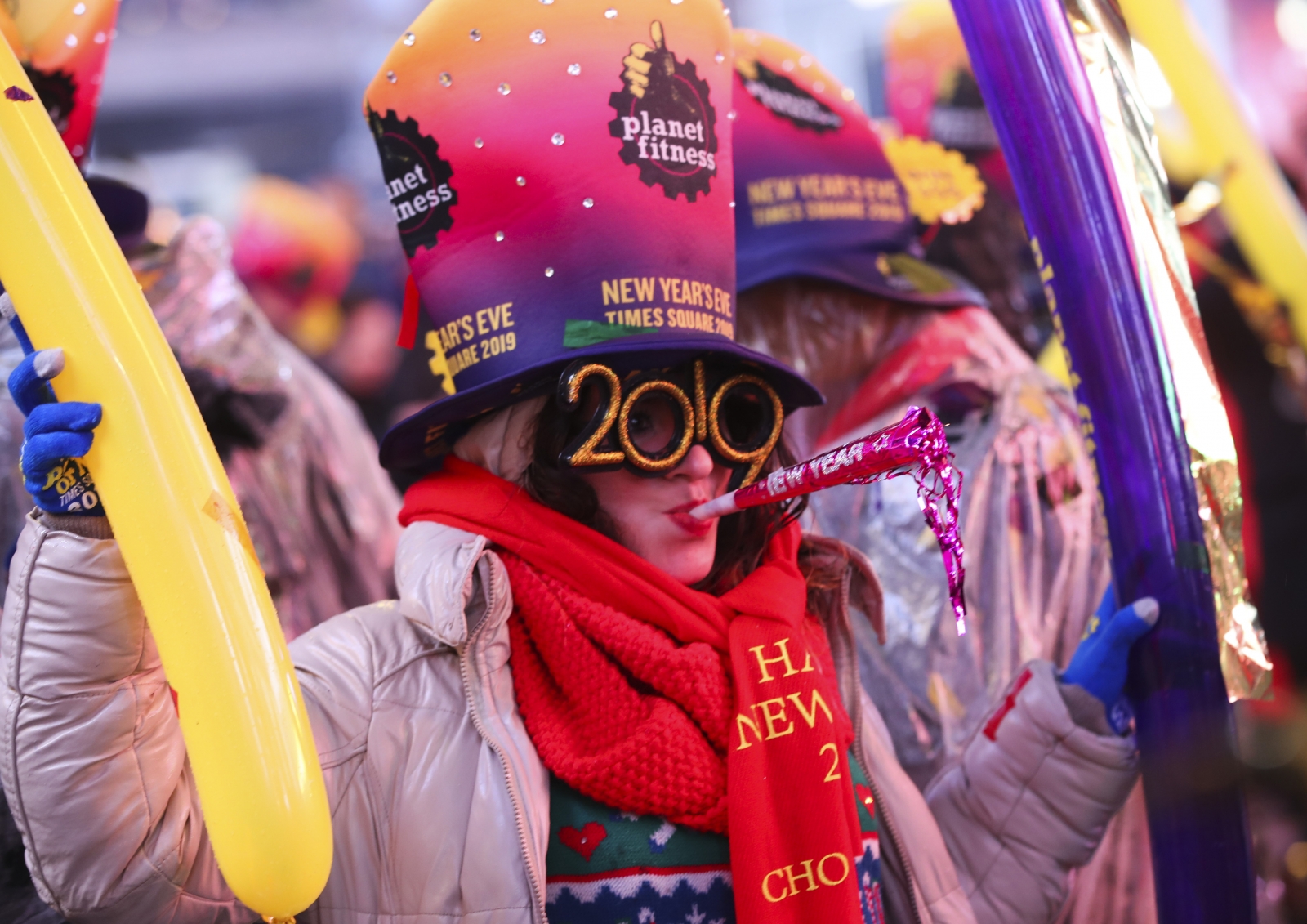
The Times Square New Year’s Eve ball drop is basically one giant street party. (Getty Images)
It is key to get there early if you’re looking to catch the Times Square ball drop on New Year’s Eve. Revelers arrive during the early afternoon in areas designated for public gathering by the NYPD within Times Square. The ball is raised and illuminated around 6 p.m., and a half-hour later, balloons, “2020” masks, scarves, etc., are distributed to the crowd. In past years, entertainment began around 6:45 p.m. and culminated with the worldwide “New Year’s Rockin’ Eve” show beginning at 8, which features major musical acts in both Times Square and Hollywood, broadcast on video screens. This year’s roster of talent has yet to be announced; check back here for details!
When the ball has dropped at the stroke of midnight, 3,000 pounds of confetti will rain down on revelers in Times Square. The show goes on no matter what the weather, even in snow and rain storms. This year, the forecast for New Year’s Eve in Times Square predicts temperatures in the mid-40s and a chance of scattered showers. So bring your layers, your poncho and of course, your waterproof selfie stick!
[This post has been updated and republished.]
Kevin Walsh is the webmaster of the award-winning website Forgotten NY, and the author of the books Forgotten New York (HarperCollins, 2006) and also, with the Greater Astoria Historical Society, Forgotten Queens (Arcadia, 2013)
—
Inspired to find your next place in New York? Whether you’re looking to rent or to buy, search NYC apartments on StreetEasy.

